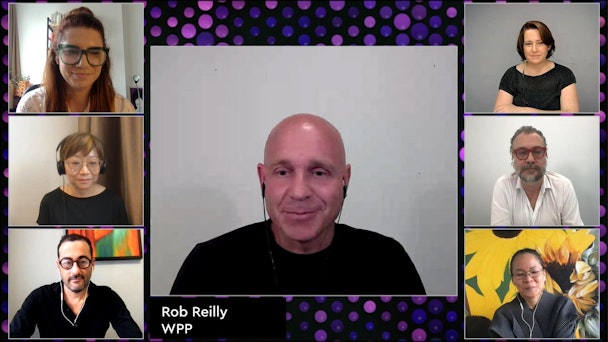WPP’s APAC leaders on the future of creativity
The nature of creativity is to change. However, thanks to the influence of technology, data, and experience, the rate at which the marketing industry is having to shed old skin are never going to slow down. Rather than fear this new speed of culture, leaders from WPP believe the future of creativity is one in which marketers can thrive if they adopt the right ways of thinking.

WPP gathered some of its brightest minds in Asia Pacific to share their vision for the future of creativity.
As WPP’s global chief creative officer Rob Reilly, shares, “As a creative transformation company, we see a future where data and technology and creativity all come together to fuel business growth and to build better futures for our people, planet, clients and communities.”
With the themes of technology, data and experience at the crux of the story, WPP gathered some of its brightest minds in Asia Pacific to share their vision for the future of creativity in an event this week.
The Drum has selected the key takeouts from this event, but you can also watch the entire session as catch up.
Creating connection through creativity
Florence Ng, Creative Director at AKQA Shanghai
According to AKQA’s Ng, the key starting place for creativity in the future needs to be remembering that consumers are people, which means they are both rational and emotional. This means people only want to connect with things that resonate with them and are worthwhile.
“We need to get back to who we are talking to and not what channels. We need human-centred thinking,” she says.
She adds that being consumer obsessed means that brands needs to design meaningful experiences that create real emotional connections in consumers’ lives, and augment with technology to enhance that experience. This allows brands to leave a lasting impression, which is challenging in a world where people’s attention is hard to capture.
If brands focus on this, she says, brands will become top of mind.
Creativity on an infinite canvas
Joao Braga, Chief Creative Officer and Melanie Wiese, Chief Partnerships Officer at Wunderman Thompson Australia
“The embracing of change really is the essence of creativity, and we can argue that technology has always been a mighty change agent,” says Wunderman Thompson Australia’s Braga.
He explains that for people like Da Vinci, Picasso, the Beatles, or Steve Jobs, it was the openness and the curiosity to constantly expand the canvases that made them the beacons of creativity that we know.
But the real opportunity for marketers, according to Wiese, is to really think about the experience of the consumer journey. It is the place of brands, she explains, to bring things together in a way that’s sticky, rather than just seeing change happen.
One change that can be viewed as both a challenge and an opportunity, they say, is commerce. The digital augmentation of commerce has created a messy customer journey, with people shopping online and offline in tandem. But this is something that brands can use to their benefit if they have a linked-up experience.
Ultimately, it’s a message of hope for marketers who are the custodians of creativity in business and, therefore, of change.
Artificial creativity, or just the new reality?
Reed Collins, Chief Creative Officer at Ogilvy Asia
Ogilvy’s Collins aims to unpick the complicated view that the industry has towards using artificial intelligence for creativity.
Faced with a world full of challenge and change, Collins believes that a new approach to creativity is necessary. He says, “If you want to change your creative thinking, or you need a different way of thinking to fit with your ideas, you’ll need to take more creative risks.
Ultimately, he believes we need to understand and embrace all the extraordinary creative possibilities that artificial intelligence can have in communications, beyond programmatic efficiencies.
“While one may think that artificial creativity will put a lot of us out of work. I believe the opposite is true since machine learning is only as creative as the human inputs that are given. At least for the time being,” he adds.
The tension between microtargeting and brand building
Valerie Madon, Chief Creative Officer at VMLY&R Asia
While microtargeting isn’t new, Madon believes that many brands are not using it to its full potential.
“Most brands fail because all they want to do is put themselves in front of someone to buy something, without trying to woo them first,” she explains. Brands need to stop viewing consumers as targets and remember they are people.
A core reason for the failure of microtargeting is that it is ineffective if your message lacks brand differentiation.
A way to do this is through customised content, which can forge a more memorable brand experience with consumers. Often, the content is an afterthought in microtargeting campaigns.
To solve this, microtargeting must be considered at the creative brief stage, and not an afterthought, so that content and creativity can be baked in from the start.
The webinar also featured a Q&A, with the speakers tackling subjects such as the relationship between data and creativity, the differences in creativity across regions and how they keep creative during recent restrictions.
A highlight from the Q&A was the parting note from WPP’s Reilly, who was asked about how creatives embrace the new era of content creators. According to Reilly, his advice for creatives is to “stay crazy” as a rule, embracing the unique position they are in to adapt to change and inspire others.
This article was produced in partnership with WPP for the Future of Creativity in APAC event.
